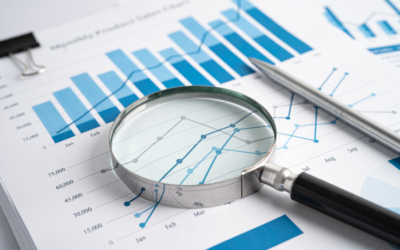
When Riley Saito first looked at the Federal Communication Commission’s map of internet access on the Big Island of Hawaii, he knew his team had some work ahead.
Saito is the Energy and Infrastructure Specialist for Hawaii County, the governing body for the Big Island, population 206,315, and geographically the largest in the Hawaiian archipelago.
The map, Saito found, listed about 72,000 distinct properties in the County. Saito knew from property tax records that the county had more than 83,000 parcels.
“It didn’t match up,” he said.
The federal Infrastructure Investment and Jobs Act of 2021 provides $65 billion to expand broadband access and close the nation’s digital divide. About two-thirds of the money – $42.5 billion – has been distributed to states and territories by the National Telecommunications and Information Administration (NTIA) according to unserved or underserved locations identified in the Federal Communication Commission (FCC) maps. Hawaii’s share was nearly $150 million.
Across the U.S., however, communities like Hawaii County have found the maps are seriously flawed. Indeed, the FCC and NTIA have procedures for disputing FCC undercounts. And while the state allocations will not change, correcting the map at the local level will determine what specific locations lack internet access and are thus eligible for the broadband funds.
For Hawaii County officials, rectifying the map has been only one of their tasks. The County also has assembled the Hawaii Island Digital Equity Coalition to create a network of partners devoted to digital equity and to help prepare funding requests. The County is now identifying unserved and underserved locations, multi-unit residential buildings with limited internet service and community anchor institutions such as schools, libraries, government sites and non-governmental entities that would be eligible for a share of the state’s $150 million
The county is emphasizing affordable connectivity for low-income residents, and also wants to use a portion of its grant to train residents on internet use and support internet-accessed workforce development programs and vocational training programs.
For advice and direction, County officials participated in a pro-bono, months-long Bootcamp program organized by the Local Infrastructure Hub, a national initiative helping small and mid-sized communities navigate and develop competitive federal infrastructure grant applications. Galvanized by Bloomberg Philanthropies, the Local Infrastructure Hub is also supported by the Ballmer Group, Emerson Collective, Ford Foundation, and The Kresge Foundation. Its partners include the U.S. Conference of Mayors, the National League of Cities, Results for America, and Delivery Associates, as well as organizations with specific expertise–including in broadband.
Shola Kahiapo-Trevino, the County’s Digital Equity Specialist, said the Local Infrastructure Hub Bootcamp sessions provided crucial data analysis and grant writing assistance. Bootcamp trainers also urged local officials participating in the sessions to be aggressive if they find that the FCC maps omit underserved areas, and explained how to gather the data to back up their case.
“You can challenge the criteria,” said Cat Blake, a senior analyst at HR&A Advisors, one of the Local Infrastructure Hub’s many technical expertise partner organizations that worked with Hawaii County and other municipalities through the months-long Bootcamp.
“It really gave me a good guideline and a good step stool to create all this information for our county,” Kahiapo-Trevino said. The one-on-one sessions were especially helpful, she said. And the feedback gave them confidence.
“We know we’re not alone,” Saito added.
Speaking at a Local Infrastructure Hub webinar, where both specialists and big cities share guidance and exchange strategies with smaller municipalities, Courtney Dozier, Deputy Director of the NTIA’s Broadband Equity, Access, and Deployment Program, acknowledged the FCC had a “herculean task” to document every locality in need of internet service.
“They did a pretty good job, but we know it’s not perfect,” Dozier said.
In Hawaii County, Saito said, the FCC map placed 2,500 households in the wrong zip code, and a sample of about 400-500 households indicated the map had a 38 percent error rate. In order to be more precise, the county is placing focus teams in areas suspected of having the greatest discrepancies. Residents are encouraged to use telephone trees to reach neighbors who may be unserved or underserved.
“That way we can really send a message to NTIA and FCC on where the hurt is and where the help is needed,” Saito said.
The Big Island is 4,028 square miles, about the size of Connecticut. Its rough topography, marked by four active volcanoes, features multiple climate zones, from wet tropical to polar tundra. The elevation and shielding that produce such climate diversity also interfere with cellular transmission and make the installation of fiber optic lines in remote areas an expensive proposition.
The Census Bureau’s 2021 American Community Survey reported 54,200 households in the state of Hawaii – more than 11 percent — did not have an internet subscription. The need is even greater because many households are connected but can’t access high-speed internet. Saito estimates 25,000 households – up to a third of all households on the Big Island alone – either lack internet or are served with very low speeds.
Hawaii’s urgent need for connectivity at the start of the COVID-19 pandemic prompted state, economic development, and civil society leaders to initiate weekly meetings with local and federal officials, internet providers, educators, and business owners to identify potential solutions. The effort became known as the Broadband Hui (Hawaiian for “association”), and the meetings continue to this day, every Wednesday, from 9 to 10:30 a.m.
“We agreed to continue to convene until the digital divide is bridged,” Saito, who is among Broadband Hui’s participants, said. “We haven’t bridged it yet.”





